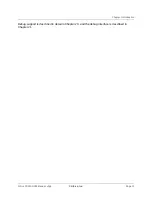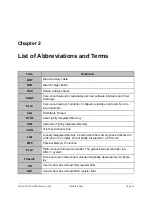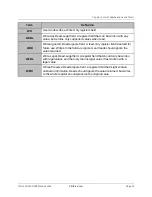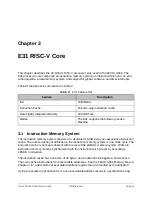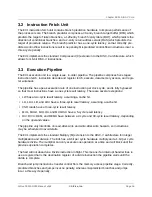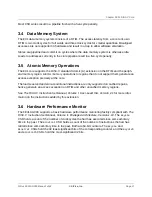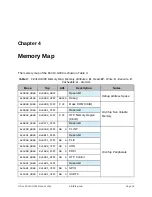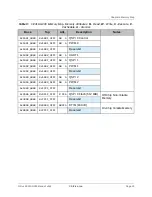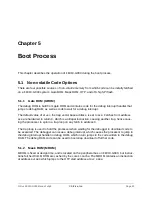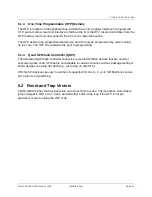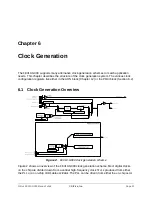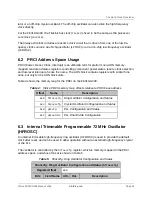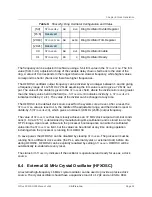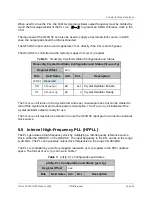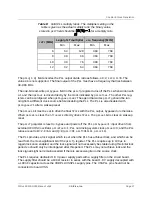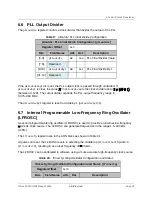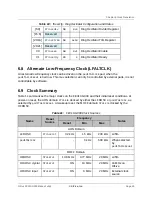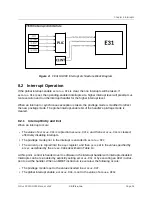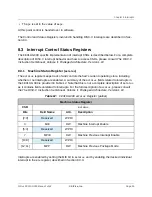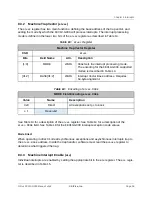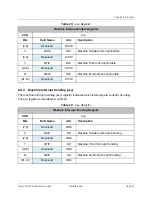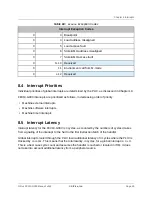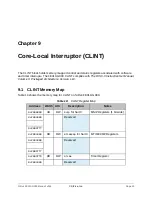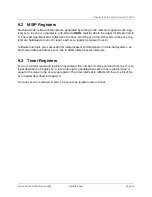
[2:0]
pllr
RW
0x1
PLL R Value
3
Reserved
[9:4]
pllf
RW
0x1F
PLL F Value
[11:10]
pllq
RW
0x3
PLL Q Value
[15:12]
Reserved
16
pllsel
RW
0x0
PLL Select
17
pllrefsel
RW
0x1
PLL Reference Select
18
pllbypass
RW
0x1
PLL Bypass
[30:19]
Reserved
31
plllock
RO
X
PLL Lock
Figure 3 shows how the PLL output frequency is set using a combination of three read-write
fields:
pllr[2:0]
,
pllf[2:0]
,
pllq[1:0]
. The frequency constraints must be observed
between each stage for correct operation.
Figure 3:
Controlling the FE310-G000 PLL output frequency.
The
pllr[1:0]
field encodes the reference clock divide ratio as a 2-bit binary value, where the
value is one less than the divide ratio (i.e.,
00
=1,
11
=4). The frequency of the output of the refer-
ence divider (
refr
) must lie between 6–12 MHz.
The
pllf[5:0]
field encodes the PLL VCO multiply ratio as a 6-bit binary value,
, signifying a
divide ratio of
(i.e.,
000000
=2,
111111
=128). The frequency of the VCO output
(
vco
) must lie between 384–768 MHz. Table 8 summarizes the valid settings of the multiply
ratio.
Table 7:
pllcfg: PLL Configuration and Status
Chapter 6 Clock Generation
SiFive FE310-G000 Manual: v3p2
© SiFive, Inc.
Page 26

